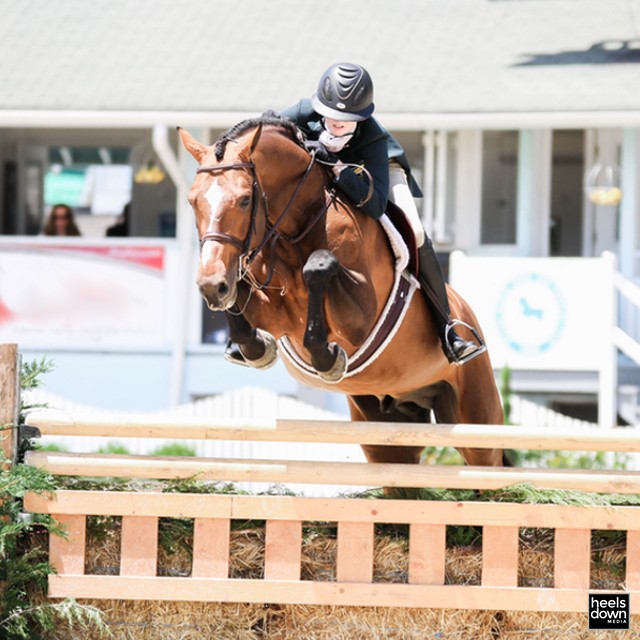The Difference Between Hunters, Jumpers and Equitation

If you grew up in hunterland, you get it. If you didn’t, you’ll watch dozens of rounds wondering why one person placed above another. At hunter jumper shows, you’ll typically find three main divisions: hunters, jumpers, and equitation. At the lowest levels, you can see the same horse/rider combinations cross entering into all three divisions. At the highest levels you’ll see horses where their entire career revolves around one division of one of those categories. Without going into the gory details, each of these three categories are broken down into divisions at shows. Those divisions can be determined by rider age or ability, horse age or ability, and an assortment of heights. Clear as mud? Great! Rome wasn’t built in a day, and neither is understanding the world of hunters and jumpers. Today we’re going to explain the major differences between the divisions.
Hunters: The easiest way to understand hunters is that it’s all judged on the horse. How the horse moves, jumps, their attitude, shape of their jump, striding, everything – it’s all about the horse. It’s the rider’s job to make the horse look and perform as ideally as possible in the hunter divisions. While there is no clear cut method of scoring like in dressage, it can still be broken down into an understandable way. A score in the 90’s is great, meaning the horse put in an above average round. A score in the 80’s is an average, solid round. A score in the 70’s is considered mediocre, probably having a fault in it somewhere. For the hunters, a fault can be as major as a refusal, or as minor as a lazy lead change. Not all horses are judged equally. One horse’s best round of its life could score worse than an average round of another horse.
Jumpers: Show jumping is a bit easier to understand as it is more widely known and there’s no subjective scoring involved. Show jumping is all about the numbers. There are two types of show jumping classes that are most common: timed first round and power and speed. Timed first round is pretty self-explanatory. The first round is timed and the riders must jump clean (no rails) within that time allowed. If they accomplish that, then they move into the jump off. For the jump off, they must jump clear and fast, with the fastest clear (or faulted if no one jumps clear) round winning. Power and speed is slightly more complicated, but still simple enough. The first part of the course is power, which means that the rider must jump clear. If they accomplish that, they get to move on to the second part of the course, which is speed. And again, the fastest round with the least amount of faults wins. Unlike the timed first round, there is no break in power and speed rounds. So unlike hunters or equitation, show jumping is a game of speed and clear rounds.
Equitation: Welcome back to being judged, but this time it’s all about the rider. Riders must demonstrate effective, thoughtful riding in these classes. The smoothest and seemingly most effortless rounds are the ones that are rewarded with top placings. Judges will take note of the rider’s position, decision making, boldness, quietness, and even how stylish they ride. Similar to the hunters, there is no standardized method of scoring and the type of horse someone is on can play a role. There is a plethora of ways riders can incur faults or mistakes into their score and some mishaps can potentially be overlooked if the judge deems it the horse’s mistake. There are a variety of equitation classes available for juniors and adult amateurs as well as prestigious divisions that have a specific final for top qualifiers.


